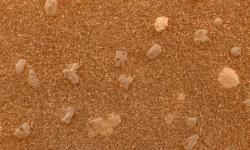Below are the most common types of materials that can become mud-stained, with steps on how to remove dirt and mud from each:
Non-washable fibers such as acetate, burlap, fiberglass, rayon, rope, silk, triacetate, wool
Washable fibers such as acrylic fabric, cotton, linen, modacrylic, nylon, olefin, polyester, spandex
Hard surfaces such as acrylic plastic, alabaster, aluminum, asphalt, bamboo, brass, bronze, cane, ceramic glass/tile, chromium, copper, cork, enamel, glass, grout, iron, linoleum, marble, paint (flat or gloss), plexiglas, polyurethane, porcelain dishes, porcelain fixtures, stainless steel, tin, vinyl clothing, vinyl tile, vinyl wall covering, zinc
Stone surfaces such as bluestone, brick, concrete, flagstone, granite, limestone, masonry tile, sandstone, slate, terrazzo
Carpet (synthetic or wool)
Special fabrics such as felt, fur (natural or synthetic), leather, suede
Silver
Wallpaper
Wood
